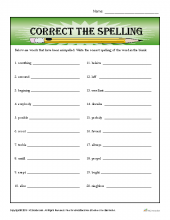
Henry Kučera invented one for the VAX machines of Digital Equipment Corp in 1981. A group of six linguists from Georgetown University developed the first spell-check system for the IBM corporation. The first spell checkers were widely available on mainframe computers in the late 1970s. SPELL, its algorithms and data structures inspired the Unix ispell program. Gorin made SPELL publicly accessible, as was done with most SAIL (Stanford Artificial Intelligence Laboratory) programs, and it soon spread around the world via the new ARPAnet, about ten years before personal computers came into general use. Gorin wrote SPELL in assembly language, for faster action he made the first spelling corrector by searching the word list for plausible correct spellings that differ by a single letter or adjacent letter transpositions and presenting them to the user. Ralph Gorin, a graduate student under Earnest at the time, created the first true spelling checker program written as an applications program (rather than research) for general English text: SPELL for the DEC PDP-10 at Stanford University's Artificial Intelligence Laboratory, in February 1971. In 1961, Les Earnest, who headed the research on this budding technology, saw it necessary to include the first spell checker that accessed a list of 10,000 acceptable words. In some cases, spell checkers use a fixed list of misspellings and suggestions for those misspellings this less flexible approach is often used in paper-based correction methods, such as the see also entries of encyclopedias.Ĭlustering algorithms have also been used for spell checking combined with phonetic information. Key advantages include needing less runtime storage and the ability to correct errors in words that are not included in a dictionary. This approach usually requires a lot of effort to obtain sufficient statistical information. An alternative type of spell checker uses solely statistical information, such as n-grams, to recognize errors instead of correctly-spelled words. Spell checkers can use approximate string matching algorithms such as Levenshtein distance to find correct spellings of misspelled words. It is unclear whether morphological analysis-allowing for many forms of a word depending on its grammatical role-provides a significant benefit for English, though its benefits for highly synthetic languages such as German, Hungarian, or Turkish are clear.Īs an adjunct to these components, the program's user interface allows users to approve or reject replacements and modify the program's operation. For many other languages, such as those featuring agglutination and more complex declension and conjugation, this part of the process is more complicated. Even for a lightly inflected language like English, the spell checker will need to consider different forms of the same word, such as plurals, verbal forms, contractions, and possessives.

To correct the spelling, go to the Suggestions tab, select the correct spelling, and click on the Change button. To do this, go to the Review tab on the ribbon and click on the Spelling & Grammar option in the Proofing group.Ĭase 1: If there is any spelling mistake in your Word document, then the following dialog box appears with misspelled words present in the red text. Microsoft also allows you to check spelling manually. Step 4: Now, tick on the Check spellings as you type checkbox, and click on the OK button, as shown in the below screenshot. Step 3: A Word options dialog box will appear on the screen in which click on the Proofing at the left pane. A list of File options will appear on the screen. Step 2: Go to the File tab at the top left corner of the screen. There are the following steps to enable Spell Check in Word. Mago, allw, wter, wodr, chek, scren, and many more. In Microsoft Word, misspelled words appear with the wavy red underline, as shown below.
SPELLING CORRECTOR WORD HOW TO
Next → ← prev How to enable Spell Check in WordĪll Microsoft Word versions have spell check features that allow you to check spelling as well as correct grammar mistakes that you made in your Word document.


 0 kommentar(er)
0 kommentar(er)
